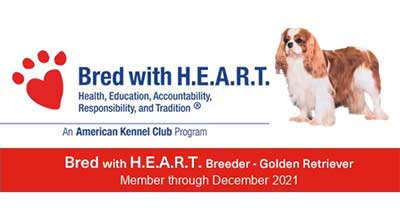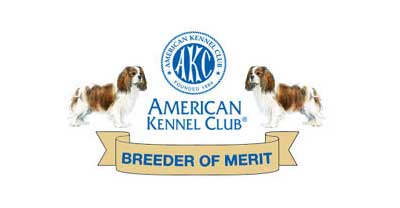Puppy Info

Selecting a puppy should be a well thought out decision. We want our puppies to be a cherished family member, to travel with you, sleep in bed with you and be your loving companions. Although we would like to supply you with the color and sex you want at the perfect time,we don’t breed for quantity, so there may be a wait. We try to match the puppy’s personality with yours. Thus we have an adoption form and we meet with you (in person or by phone) and get to know you and your family.
Bringing Home Your Puppy
Dishes, Toys, the Crate & Bed, Grooming Supplies, and Food:
Practical Dishes: Practical dog dishes are easy to clean and very difficult to tip over. You should have two separate bowls, one for food and one for water. Don’t buy two bowls bonded together as you can’t take away just one or the other if needed. Place the bowls where they are easily accessible to your puppy and will not slide around when he eats or drinks.
Toys: There are many unsafe and few safe toys on the market. Cavaliers are smaller dogs and therefore, have smaller throats and are more likely to choke on pieces of toys which can be chewed off. All rubber toys must be made of hard rubber so your puppy cannot chew them up and choke on small pieces. Also, many toys have squeakers which are small white plastic at the air opening and these squeakers will come out after being chewed on. This is not a big concern to a bigger dog, but it could be the last toy your Cavalier ever played with. So, look for squeaky toys which have a small opening but not a separate piece that makes it squeak. Our favorite toys are tennis balls (safe for Cavaliers but maybe not bigger breeds), Nylabones, and very tight solid rope bones (good for puppy’s teeth).
Grooming: Little grooming is required for Cavaliers, especially puppies. Cavaliers do not come into their adult coat until they are 1-2 years old. A good brushing once a week with your basic bristle dog brush will prevent you from having a matted coat. Cavaliers will develop longer hair feathering of their ears, chest, tail, and behind their legs. These areas can develop knots and are easily removed with a wire slicker brush. You may on occasion have to cut one out if it is left unattended for a long period of time. There is to be not trimming of the Cavalier except for between the pads on the underside of the feet. These areas will make it easier for your Cavalier to walk, and will prevent him from picking up dirt, mud, ice balls in the snow, etc. .. Do not trim off the hair growing on the top of the feet, as this will develop into the look of “slippers” which every Cavalier should have.
Bed: Every dog needs a place of its own where he feels safe and secure. Dogs are naturally den animals, as were their ancestors, and instinctually enjoy seeking refuge in a small cozy area. This will be his area to go when he is tired and wants to get away from all the action in order to get some rest.
You will need to begin a regimented routine as soon as your puppy comes home. A puppy 10-12 weeks old will need to go out about every two hours the first week just to learn where he is to go out when he needs to relieve himself. This time can quickly be lengthened so that within two weeks, you only have to let him out about every three hours, depending on the puppy’s age. Watch for what he does right before he relieves himself. This will clue you in as to when he needs to go out the next time. NEVER crate a puppy for more than three hours in the beginning. Set crate or bed inside X-Pen and leave available to him with an open door to X-Pen during the day. You will be surprised at how quickly he will become comfortable with it and go in for a nap when he is tired. Teach any children that this is the place for the puppy to be alone. If he goes in there, the children MUST leave him alone. Otherwise, he will not view it as a safe place to go when he needs to rest.
X-Pen: You can find them at most pet shops or feed shops, Pet Co, PetSmart,etc. These pens are great when your not able to keep a eye on puppy the first few months you have your puppy. If you have other dogs it provides a safe place for him until he can fend for himself. Keep his kennel inside the pen so he has his place to nap, have an area away from his food and kennel where you can set a pee pad down so he learns to pee in one spot. You can take him outside every few hours so again he learns where to go. After a while you will be able to open the door to the x-pen and he will go outside himself. When you are able to keep an eye on the puppy let him play outside the X-pen, hopefully that will be often
Food: Puppies are very active and, like babies, have special nutrition requirements. A high quality puppy food which has a high protein content, derived from meat as its primary product, should be used. A dog food containing corn or other bulk product as its first ingredient is only about 50% digestible. A dog food in which the first ingredient is chicken, or lamb, or beef is about 80% digestible. When a dog eats a “corn” diet, 50% of it stays in him and 50% of it is waste. when a dog eats a “meat” diet, 80% of it stays in him and only 20% of it is waste. So, when a higher quality dog food is used, your puppy gets better nutrition, less food can be fed, and less stool is excreted.
We recommend 50% of puppies diet raw and 50% kibbles , we will give you a food list before you take your puppy home. I will also give you more information about feeding your dog a raw diet, which we here at Castle Creek highly recommend.
Your puppy will go home with a supply of the food we have been feeding him. If you decide to switch your puppy’s food, wait until he settles into his new home, then feed 75% present food with 25% of the new food for 2-3 days. Then use 50%-50%, then 25%- 75%, and finally 100% of his new food. This is just a guideline. It doesn’t have to be exactly like this, but make the change gradually over a period of a week or so. This will prevent stomach upset and diarrhea from the change of food.
A good guide for feeding your puppy is to feed him three times daily until 12 weeks of age, then twice daily. Feed according to the recommendations on the puppy food bag, but adjust this amount to your puppy. If he is plump, then he is eating enough, if he is slim, feed a little more. Remember that a growing puppy needs proper nutrition, but once grown, he must NEVER be overfed, as this can shorten his life span dramatically. Also, DO NOT get into the irreversible habit of feeding your Cavalier table scraps while your eating. We can guarantee you that this will lead to a begging Cavalier at the dinner table.


